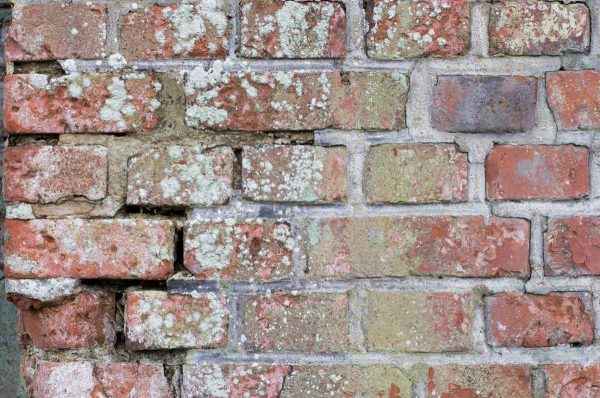The ins and outs of efflorescence

If you’ve ever walked by a brick wall, you’ve seen efflorescence. You might not have known the word for it, or even that that’s what it was, but you’ve definitely seen it. It’s that chalky white powder that builds up on masonry over time.
Does it really matter, though? It definitely affects the look of the wall, but it doesn’t actually mean anything bad. Unlike crumbling or receding mortar, efflorescence is purely cosmetic and doesn’t affect the underlying structure.
That being said, you might want to remove it if you’re trying to keep your building looking new and sharp.
What is efflorescence made of?
If you live in a humid environment, you’re much more likely to see efflorescence than you are in a dry one. That’s because it’s made of minerals in the masonry that are carried to the surface by water—for example, lime from the Portland cement in mortar that mixes with the carbon dioxide in the air. In less humid environments, that water usually evaporates before it makes it to the masonry surface.
There are times when efflorescence shows up very quickly after masonry is installed, while sometimes it takes a while for it to show up. But it will come. The denser the materials used in the masonry, though, the harder it is for it to happen. Materials matter when it comes to keeping your brick walls looking clean and sharp.
How do I get rid of it?
Efflorescence may not matter for the structural integrity of your building, but it definitely affects the look of it. To keep your building’s exterior clean, you’ll have to do some work. Hosing down the building doesn’t really help, because often even if you get the surface minerals off, there’s still some just below that will leach out quickly. When the masonry dries it will be just like it was before.
To remove efflorescence, you might need an acid for removal. Professionals can help you decide the best way to go about it, though, and you’ll need a hand if your wall is one that needs harsh chemicals.
If your wall had a hydrophobic agent added in the building process and the bricks weren’t exposed to moisture, you’ll only have to deal with minimal efflorescence. And no matter what the construction, after several years all the minerals will have leached out and you won’t have to worry about it again.
If you do want to clean up the outside of your building, though, contact a professional company like JK Industries that can help you safely and quickly remove that white layer. We’ll recommend the best course of action for your building.
